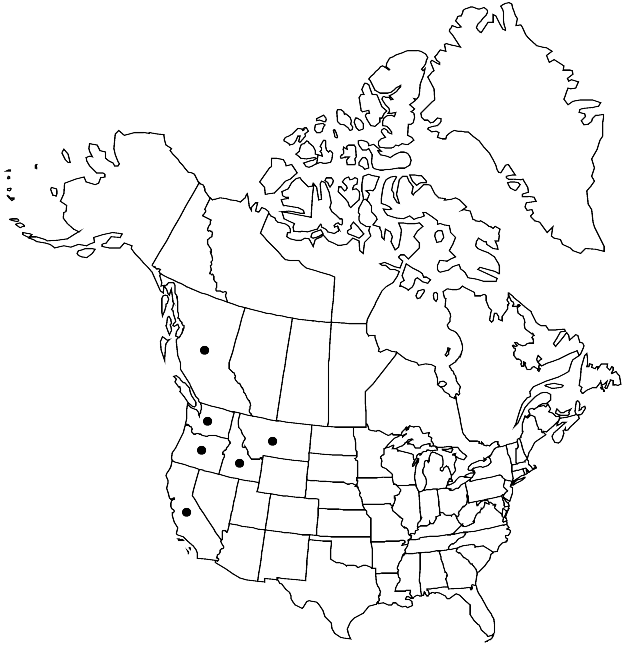Homalothecium megaptilum
Bryologist 65: 100. 1963.
Plants very large, in loose mats, pale whitish yellow, in deep shade often green. Stems to 15 cm, regularly pinnate in one plane, branches to 15–20 (–30) mm, straight to slightly curved. Stem-leaves erect, triangular-ovate to broadly ovatelanceolate, 3.5–4.5 × 1–1.8 mm; base slightly narrowed, narrowly decurrent; margins plane or recurved in places, serrulate throughout or occasionally subentire; apex gradually tapered, apiculate; costa to 70–90% leaf length, terminal spine sometimes present; alar cells elongate, 50 × 9 µm, region in up to 6 rows; laminal cells linear, 60–110 × 4–6 µm; basal-cells elongate, region in 2 or 3 rows, gradually differentiated from distal cells. Branch leaves erect when dry or moist, oblong, narrower than stem-leaves, to 3 × 0.8 mm in proximal portions of branches, smaller to minute near branch bases; margins plane to very narrowly recurved at places, more strongly serrulate; apex acute, sometimes blunt; costa to 70–90% leaf length, terminal spine absent; laminal cells very narrow, 50–95 × 4–5 µm; basal-cells in fewer rows than those in stem-leaves; distal cells smooth. Sexual condition dioicous or phyllodioicous. Seta to 2.5 cm, rough. Capsule horizontal, ovoid-oblong, curved, to 2.5 mm; annulus separating by fragments; operculum long-conic; peristome xerocastique, perfect; exostome teeth with long transitional zone; endostome basal membrane high, segments as long as exostome teeth, narrow, cilia as long as segments, appendiculate. Spores 10–20 µm.
Habitat: Litter in coniferous forests, among grasses in open sites, logs, rock
Elevation: low to moderate elevations (60-1300 m)
Distribution

B.C., Calif., Idaho, Mont., Oreg., Wash.
Discussion
Homalothecium megaptilum is easily recognizable by its large size, regular pinnate branching in one plane when wet, and usually very pale color. The stems coil upward when dry and flatten when moist; the stem leaf apiculus is often somewhat blunt, hooklike, and recurved or incurved; the basal laminal cells are porose; and the sporophytes are infrequent.
Selected References
None.
Lower Taxa
"long" is not a number."broad" is not a number.